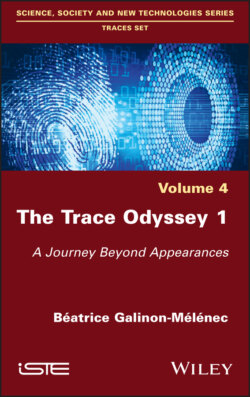Читать книгу The Trace Odyssey 1 - Beatrice Galinon-Melenec - Страница 16
I.10. Confronting points of view
ОглавлениеIn Figure I.237, below, cause and effect can, a priori, illustrate a simple causal relationship: a behavior of X (the husband) is considered to provoke the response of Y (the wife). The case of the interviewed couple expresses their disagreement on the place of X and Y in the cause-effect relationship. X and Y carve out the succession of cause-effect relationships differently, leading them to produce divergent points of view. Watzlawick et al. (1979) show that it is a question of punctuation, of different choices in carving out the sequence of interactions.
Take a couple struggling with a marital problem [...]. The husband contributes to it with his withdrawal and passivity, while the wife contributes with her aggressive criticism. When talking about their frustrations, the husband will say that withdrawal is his only defense against anger, the wife will qualify this explanation as a gross and deliberate distortion of what is “really” happening in their relationship. She criticizes him because of his passivity [...]. Their confrontations are reduced to a monotonous exchange of such messages: “I retreat because you are angry” and “I am angry because you retreat. (Watzlawick et al. 1979, p. 54, section 2.42, author’s translation).
Figure I.2. Disagreement on the cause-consequence relation
The sequence is repeated: the husband (arrow from 3 to 4) retreats, because his wife is bad-tempered (arrow from 2 to 3), and so on. The wife (arrow 2 to 3) is bad-tempered because her husband is retreating (arrow 1 to 2). Each one thinks that their behavior is the consequence of the other’s, which is the only cause. Thus, any communication sequence between two people is an interaction.
In the following chapters, we see that the differences in the way reality is carved out, depending on the individual, do not only apply to interpersonal communication. They are found in all the “capta” of the reality, constructed from “points of view” based on the analysis of the difference in the orientation and focus of attention38. This leads to changing the point of entry in the reception of reality that each individual has.
The “points of view” of some can always be questioned by others, without however, these alone being able to cover the totality of reality, whose “character does not depend on what anyone may think” (Peirce 2002, p. 54)39. We shall return to this later, based on the Indian fable of the Blind Men and the Elephant.
NOTE.– The main theme of The Trace Odyssey questions the dynamic processes – linked to traces – that lead to different interpretations of the same reality.
Figure I.3. The human–robot relationship: individualities of a different nature (source: Galinon-Mélénec 2018). For a color version of this figure, see www.iste.co.uk/galinonmelenec/traceodyssey.zip
The example illustrated above by the conflict between husband and wife is frequently found in human relationships. That having been said, what about in human–robot relationships?
As we see in the following pages of The Trace Odyssey, even when the relationship is fluid, it is important to bear in mind that, as shown in Figure I.3, the two individuals are not of the same nature. Their “corps-trace” do not carry the same life history. A human being is part of the history of hominids – which includes all the experiences of living beings – whereas robots are part of the history of machines with artificial memory. The human body is far superior and more complex in its functioning compared to that of a machine, if only because of the emotions, affect and pain that intervene in reaction to the stimuli a person receives.
The Trace Odyssey explores the consequences of this human–robot relationship and provides an opportunity to demonstrate that:
– human–machine interactions produce traceable conséquences-traces in both;
– the robot, because of its different nature, can only substitute human beings in cases where the task transfer does not present a probability of risks that is greater than its benefits for humans.
